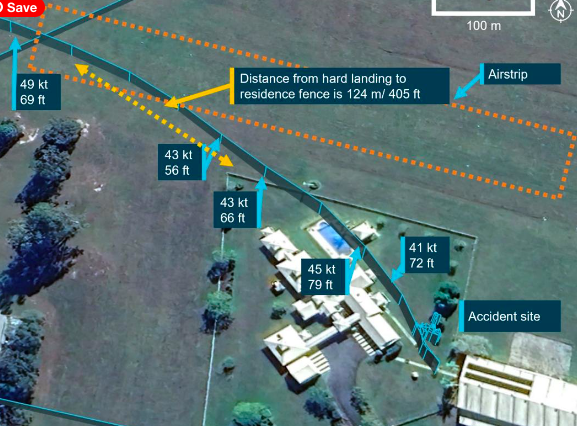Lessons Learned: Importance of Missed Approach Preparedness

Obstacles limited climb performance during go-around, highlighting importance of missed approach preparedness.
A collision with terrain involved a Stoddard Hamilton Aircraft Glastar, VH-BAQ, about 18 km northwest of Noosa, Queensland, and highlights the importance of missed approach preparedness. An accident at a private airstrip on Queensland’s Sunshine Coast demonstrates the importance of pilots being prepared to conduct a missed approach, and of being aware of factors that affect climb performance.
On November 12, 2023, a Stoddard Hamilton Glastar light aircraft was being used for a private flight from a grass airstrip on a property near Boreen Point, northeast of Noosa, with a pilot and passenger on board.
An ATSB (Australian Transport Safety Bureau) final report notes during the approach to land, the aircraft crossed a tree line in the runway undershoot and the pilot reported that the aircraft encountered sink.
The pilot advised he twice increased engine power in response, but the aircraft touched down firmly and was simultaneously struck by a gust of crosswind, which picked up the left wing and turned the aircraft to the right toward the house on the property.
In response the pilot initiated a go-around and the aircraft became airborne again, cleared a property fence and a building, and then struck the top of a palm tree before impacting the ground.
The aircraft was substantially damaged, the passenger sustained significant injuries, and the pilot sustained minor injuries.
Flight data examined by the ATSB indicated the aircraft had a 49 kt groundspeed as it crossed the threshold on final approach.
While weather data recorded at the nearest airport — Sunshine Coast —indicated some headwind, which would have raised the airspeed, airspeed was still probably below the 65–60 kt recommended by the aircraft’s pilot operating handbook (POH).
“The unexpected sink on final approach would also be consistent with the POH, which advises of increased sink at reduced airspeed,” ATSB Director Transport Safety Stuart Macleod explained.
Once the decision was made to perform a go-around, the ATSB report notes, the aircraft was not realigned with the airstrip and instead headed toward the house.
“Obstacles prevented the aircraft from being flown at the optimal, shallow climb profile to increase airspeed,” Mr. Macleod said.
“Consequently, the aircraft’s speed and height remained low, resulting in it striking the top of a tree close to the stall speed, before impacting the ground.”
The accident is a reminder for pilots to be prepared to conduct a missed approach, and to be aware of the factors which could affect subsequent climb performance.
“A preparedness to conduct a missed approach and being aware of aircraft climb performance mitigates against slow reaction times to a surprising or startling event, and ensures a safe go-around,” Mr. Macleod said.
Read the final ATSB report: Collision with terrain involving a Stoddard Hamilton Aircraft Glastar, VH-BAQ, about 18 km north-west of Noosa, Queensland, on 12 November 2023; publication date: 14/06/2024.



